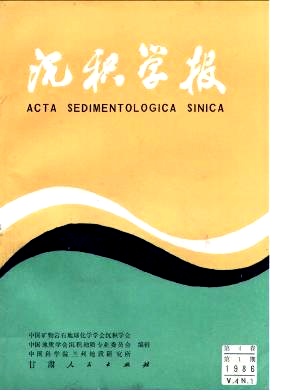HTML
| [1] | (1) 姜春发等,1979,地质学报,第53卷,第3期,203一218. (2) 张勤文,1981,地质论评,第27卷,第5期,405一412. (3) 关尹文等,1959,地质学报,第39卷,第2期,188一212. (4) 关尹文等,1983,沉积学报,第1卷,第4期,117一123. (5) 夏邦栋,1982,石油勘探与开发,第6期,8一16. (6) 叶连俊等,1983.,华北地台沉积建造,科学出版社,1一61. (7) 夏邦栋,1963,南京大学学报(地质学) ,第1期,31一13. (8) 卢华复,1965,南京大学学报(自然科学) ,第9卷,第3期,306一37a8 (9) 马瑞士,1965,南京大学学报(自然科学) ,第9卷,第4期,456一448. (10) 郭令智等,1980,国际交流地质论文集(构造地质) ,地质出版社,019一116. (11) 李继亮等,1978,地质科学,第1期,26一44. (12) Duff,P.M.D.,Hallam,A.,Walton,E.K.,1967,Cyelie Sedimentation,Developments in Sodimentology 10,123一231 (13) Bouma,A.H.,1962,Sedimontology of Some Flyseh Deposits.Elsevier,Am-sterdam (14) Hubert,J.F.,1966,Journal of Sedimentary Petrology.Vol.36,N0.3,677一699 (15) Piper,D.J.W.,1978,In"Sedimentation in Submarine Canyons,.Fans,andTrenehes,"163一176 (16) Hesse,R.,1975,Sedimentology,Vol.22,No.3,387一416 (17) Allen,J.R.L.,1982,Sedimentary Struetures,Tileir Charaeter and Physieal Basis.Vol.11,395一417 (15) Wezel,F.C.,1972,24th Internat.Geol.Cong.Proe.Seet.6,115一116 (19) Reading,H.G.,1072,24th Iuternat,Ceol,Cong.Proe.Seet,6,59一67 (20) Crook,K.A.W.,1974,Soe.Eeon.Paleontologists and Mineralogists Spee.Pub.19,304一310 (21) Kuenen,P.H.,1964,Turbidites,Developments in Sedimentology3,3一33 (22) Bouma,A.H.,1964,Turbidites,DevlopnrentiSedimentology3,247一256 (23) Lowe,D.R.,1979,Soe.Eeon.Paleotologists and Mineralogists Spee.Pub.27一75一82. (24) Lowe,D.R.,2982,Journal of Sedimentary Petrolog,Vol.52,Nol.279一297 (25) Hubert,J.F.1972,24th Internal.Geol.Cong.Proe.Seet.6,101一104 (26) Thompson,A.M.,1972,24th Internat.Geol.Cong.Proe.Seet6,89一99 (27) Grossgeym,V.A.,1972,Geoteetonies,No.l,22一25 (28) Чалншев ,С.И.,1976 Pитмичность Флища и моласса .Л.,Изцатгльство “Hayka”,276C. (29) Романновский, С.и.,1976, Лииамцка Флища.Л.,Издате-льство“Нeдpa”,175C. |






 DownLoad:
DownLoad: